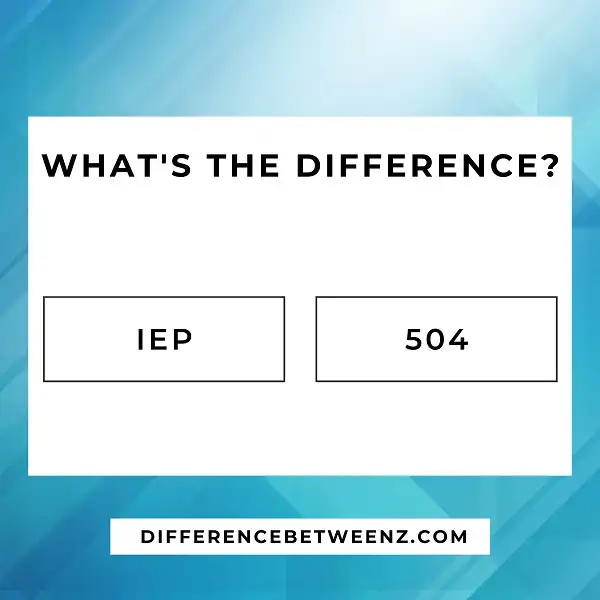In the United States, there are two primary types of legal documents that outline special education services for students with disabilities: IEPs and 504 plans. Both documents provide different benefits for students, and it can be confusing to determine which document is appropriate for a given student. This blog post will outline the key differences between IEPs and 504 plans.
What is IEP?
IEP stands for Individualized Education Plan. It is a document that is created for students who have been identified as having a disability that affects their ability to learn. The IEP is developed by a team of educators, parents, and other professionals who work together to create a plan that meets the unique needs of the student. The IEP typically includes goals and objectives for the student, as well as specific accommodations and modifications that will be put in place to support their learning. IEPs are reviewed and updated on an annual basis, or more often if needed, to ensure that they are still meeting the needs of the student.
What is 504?
504 refers to the section of the Rehabilitation Act of 1973 that prohibits discrimination against people with disabilities in programs and activities that receive federal financial assistance. 504 ensures that people with disabilities have an equal opportunity to participate in and benefit from federally-funded programs and activities. In order to comply with 504, program administrators must make reasonable accommodations for people with disabilities.
For example, a 504 accommodation might involve making a special exception to a rule or providing a service in a different way. 504 accommodations are typically made on an individual basis, as each person’s needs are unique. However, 504 also requires that program administrators take steps to prevent discrimination against people with disabilities and ensure that their programs and activities are accessible to everyone.
Difference between IEP and 504
IEPs and 504s are both accommodations that can be made for students with disabilities. IEPs are made on an individual basis, and they are specific to the student’s needs. They outline the student’s goals and the services that will be provided in order to help them meet those goals. 504s, on the other hand, are made on a case-by-case basis and they are not specific to any one student. They outline the accommodations that will be made in order to make sure that the student has access to the same education as their peers. IEPs are more rigorous and have more specific requirements than 504s. However, both IEPs and 504s can be incredibly helpful for students with disabilities.
Conclusion
IEPs and 504 plans are two different ways to provide accommodations for students with disabilities in school. The main difference between the two is that an IEP is a legally binding document, while a 504 plan is not. If you have questions about which type of plan your child should have, be sure to talk to your child’s teacher or school administrator. They will be able to help you determine what’s best for your child.


